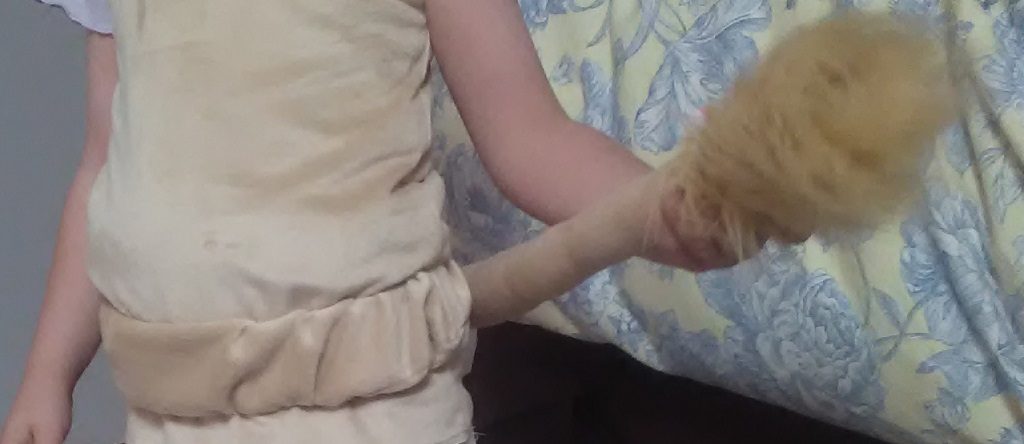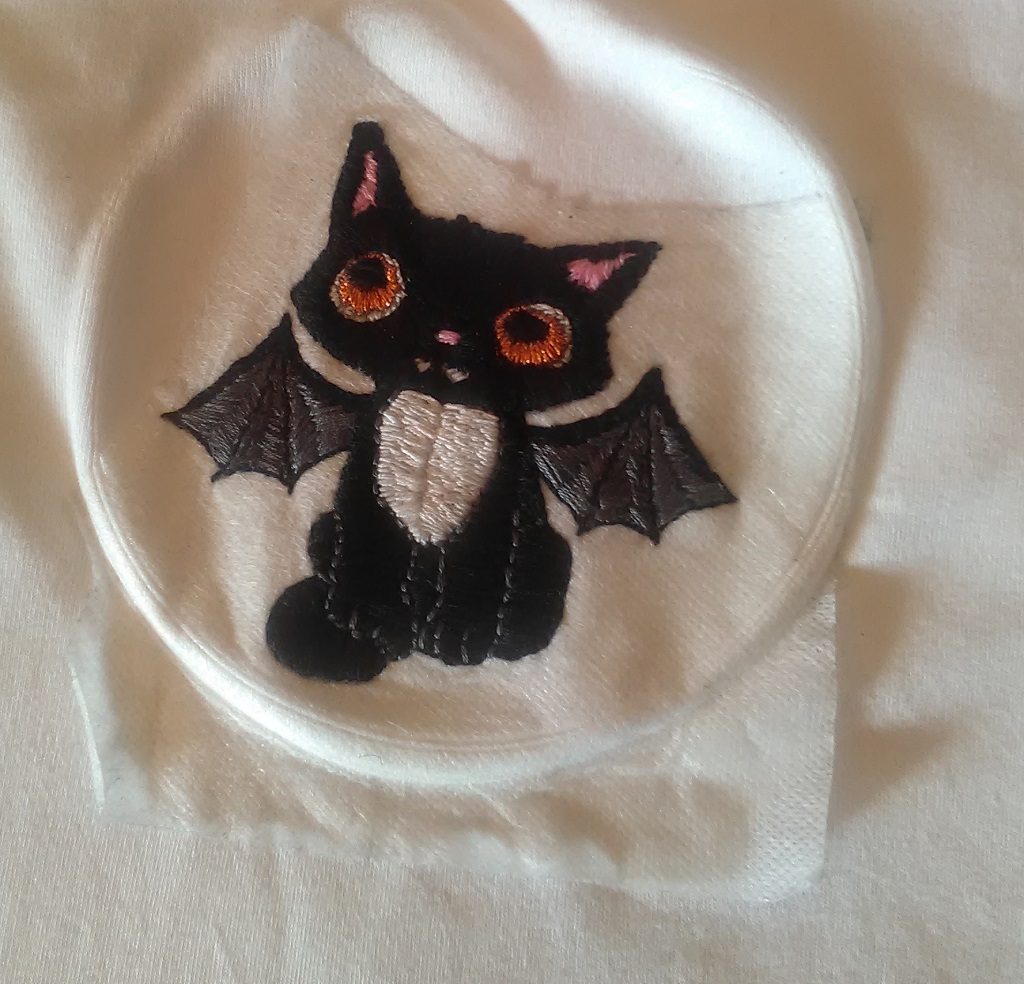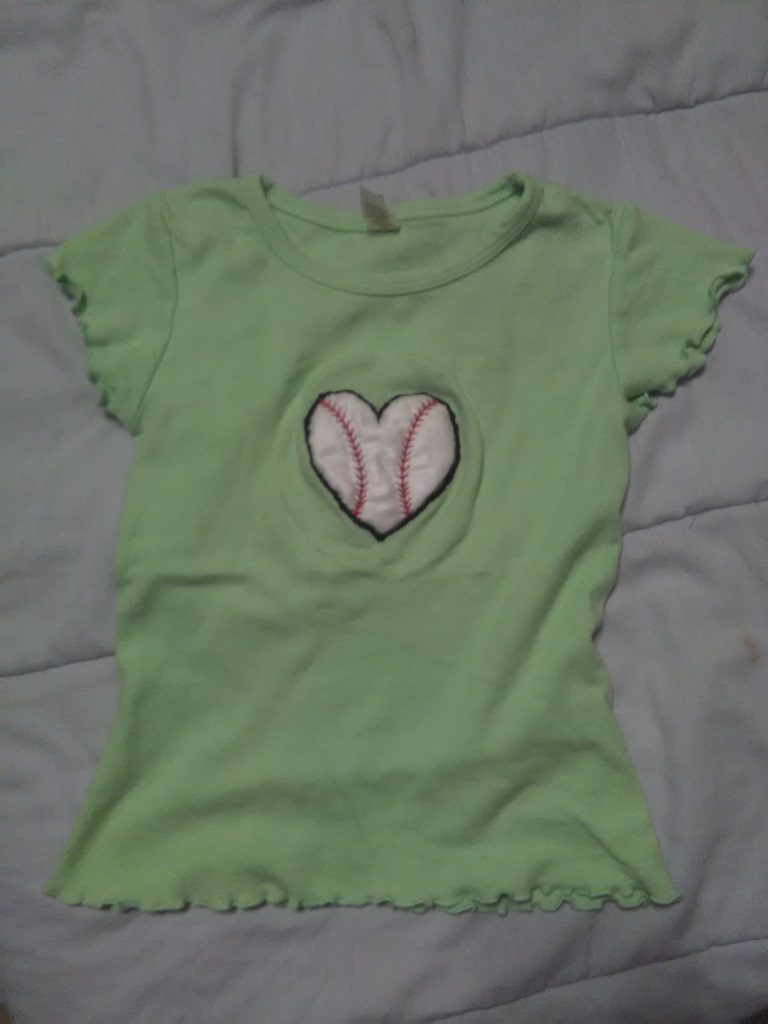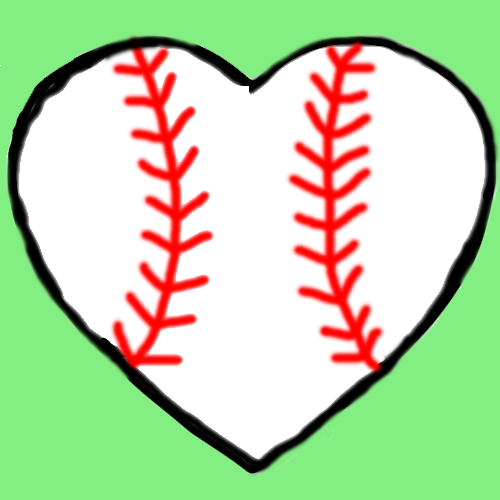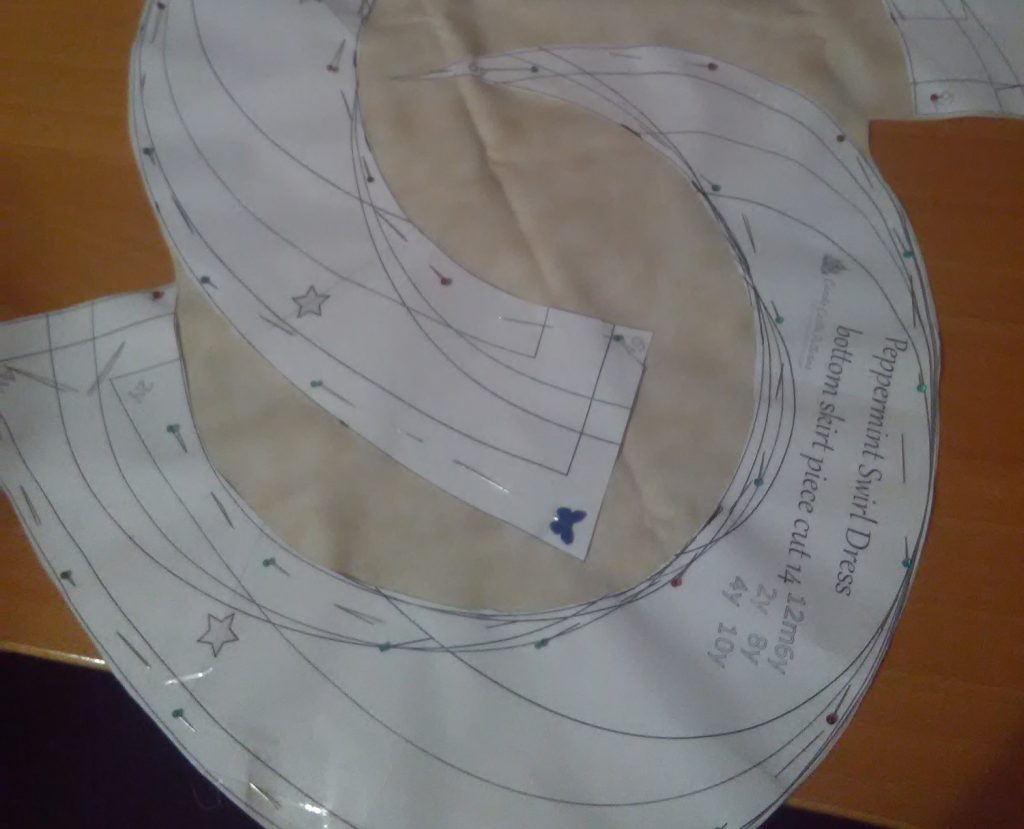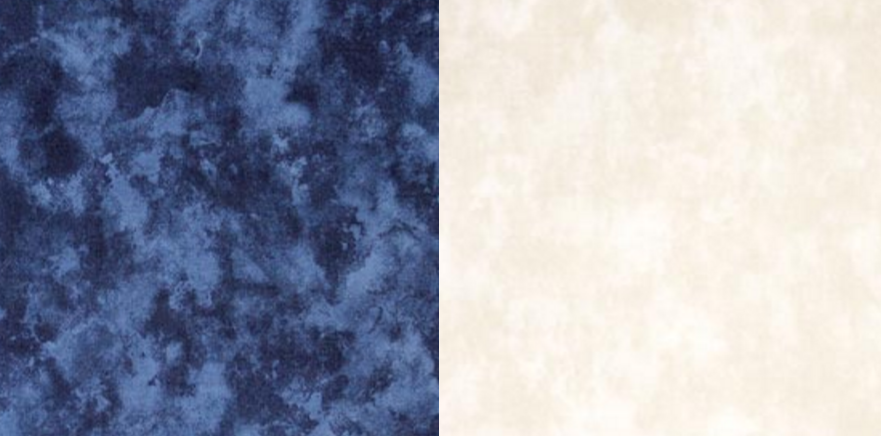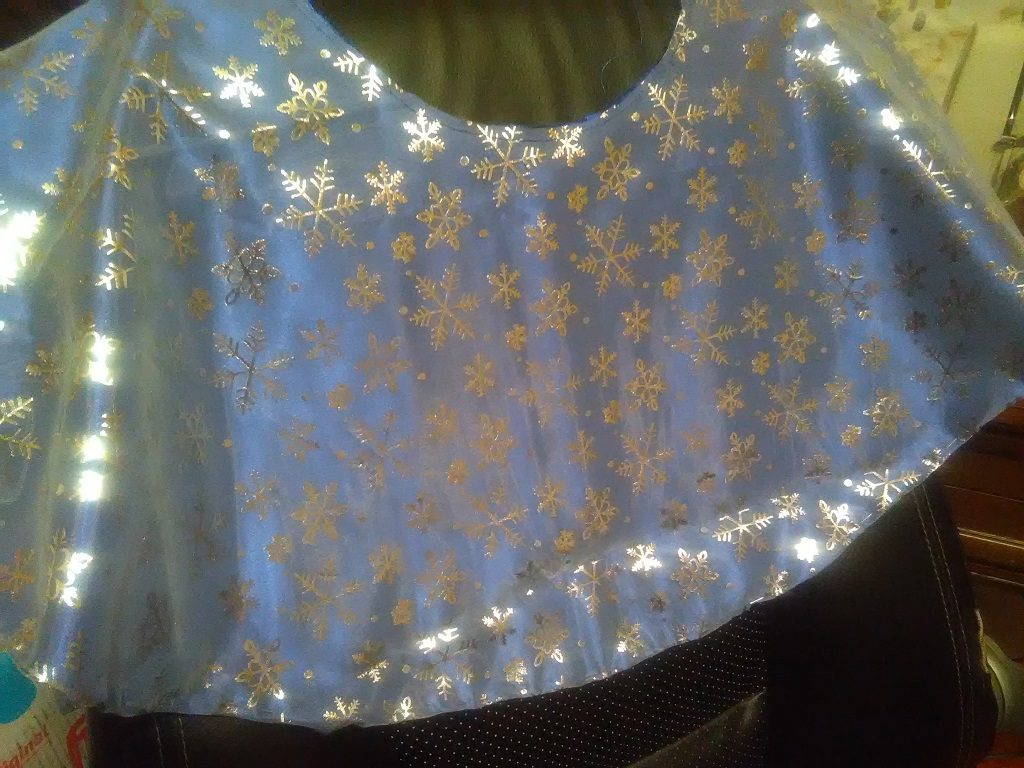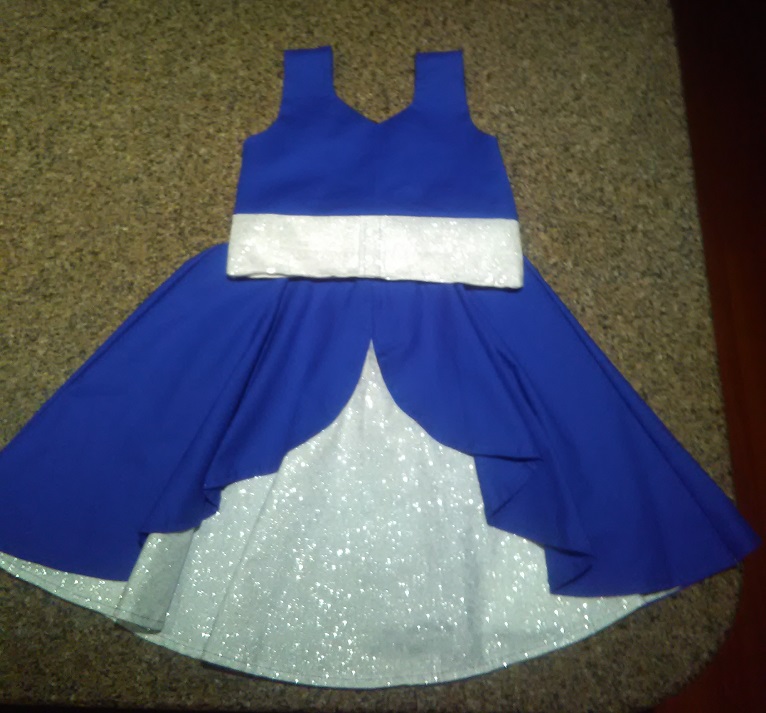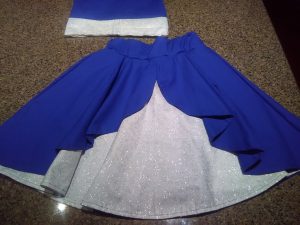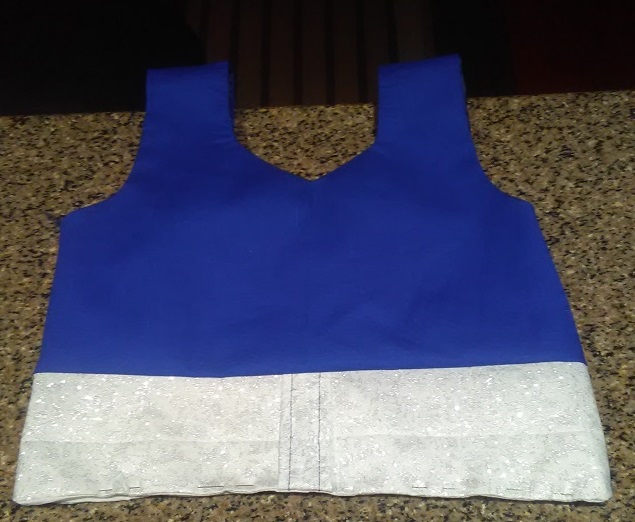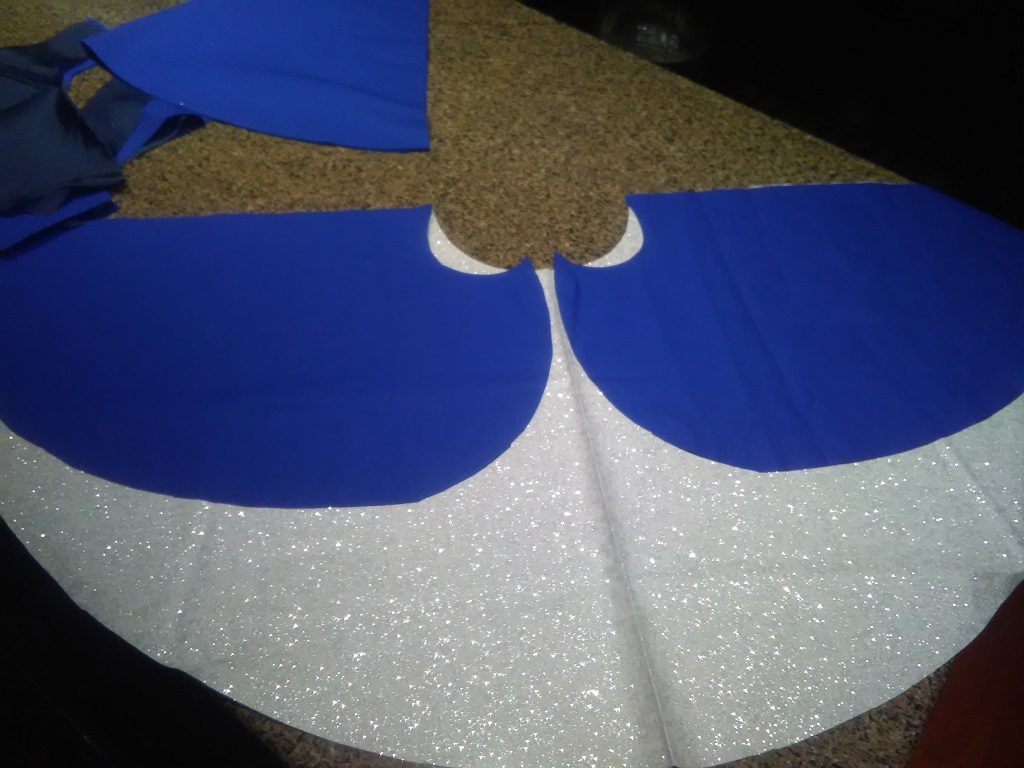To make Anya’s lion tail, I started with an elongated trapezoidal piece of furry fabric — not quite a rectangle because I wanted it thicker at the base of the tail and thinner at the end. I folded it in half length-wise, with the right sides together, and used the serger make a fabric tube. Turned it right side out and stitched the ‘tip’ of the tail closed. I used a bunch of poly-fil and slowly stuffed the tail (using big wads to stuff the tail made it look lumpy. I took small pinches of the stuff and pushed it to make a firm filling.). Then I hand-stitched a strip of long fur around the tip.
I wanted something Anya could put on by herself, so clipping the tail onto her clothes wouldn’t work. I decided to use an elastic band – cut a 4″ wide strip of the lion fur fabric about 6″ longer than Anya’s waist circumference, folded it in right sides together, and serged it into a tube but left a few inches at the end. I then inserted the tail into the tube and folded it so the top fabric of the tail was aligned with the top fabric of edges of the waistband fabric and finished serging the strip. I then turned the whole thing right-side out — so the tail was firmly held into the band and dangled down. I measured out a strip of elastic about 2″ bigger than Anya’s waist, threaded it through the band, and sewed the elastic together with a lot of overlap. My hypothesis is that I’ll be able to open the seam and make her bands bigger as she grows. Once I confirmed it was tight enough to hold the tail up on her waist, I hand-stitched the tube together at the ends to make a band. Voila, one lion tail!
